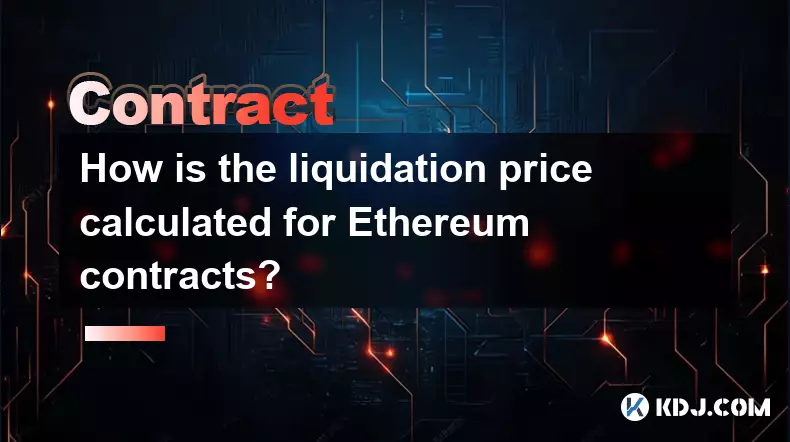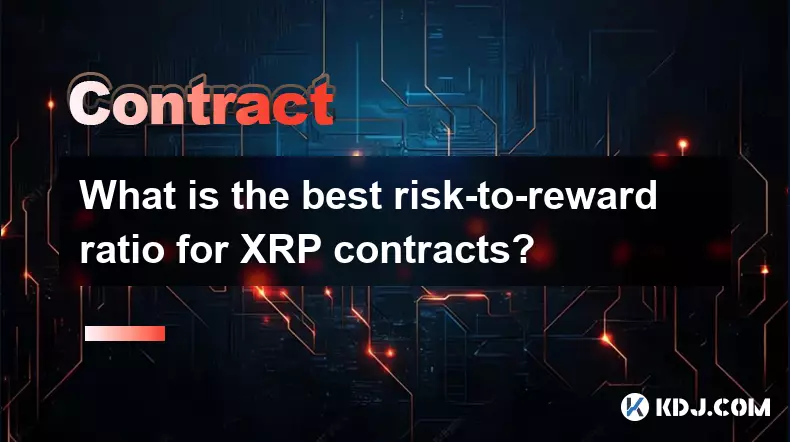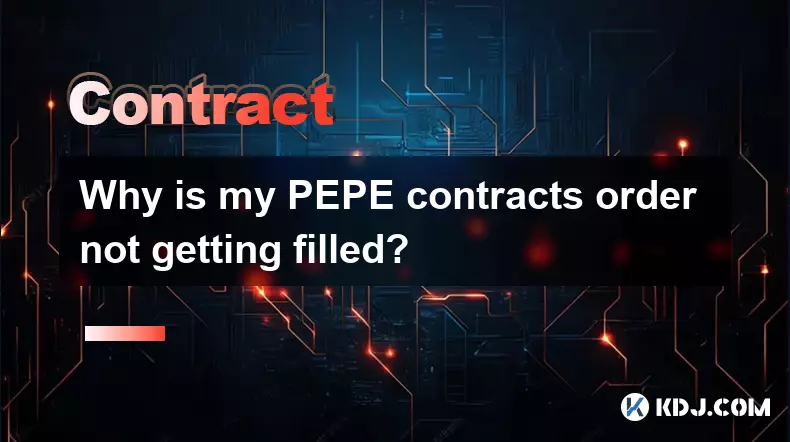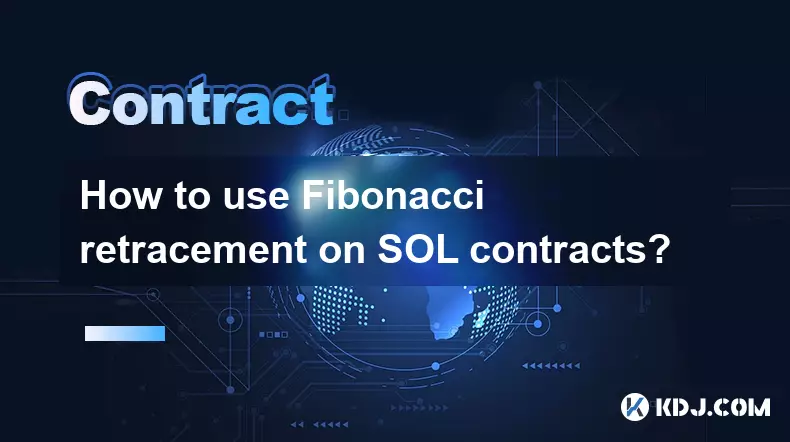-
 bitcoin
bitcoin $108842.957301 USD
-1.88% -
 ethereum
ethereum $3931.777121 USD
-1.66% -
 tether
tether $1.000186 USD
-0.03% -
 bnb
bnb $1153.250882 USD
-2.20% -
 xrp
xrp $2.367904 USD
-1.94% -
 solana
solana $186.182050 USD
-4.20% -
 usd-coin
usd-coin $0.999997 USD
0.00% -
 tron
tron $0.316949 USD
-1.00% -
 dogecoin
dogecoin $0.190780 USD
-3.12% -
 cardano
cardano $0.651324 USD
-2.67% -
 hyperliquid
hyperliquid $37.141055 USD
-0.85% -
 ethena-usde
ethena-usde $0.999224 USD
-0.09% -
 chainlink
chainlink $17.579031 USD
-2.47% -
 bitcoin-cash
bitcoin-cash $509.426284 USD
-2.79% -
 stellar
stellar $0.315298 USD
-2.93%
How is the liquidation price calculated for Ethereum contracts?
Liquidation in Ethereum contracts occurs when a trader's margin falls below maintenance levels, triggering automatic position closure to limit risk.
Oct 17, 2025 at 09:18 pm

Understanding the Basics of Liquidation in Ethereum Contracts
1. Liquidation occurs when a trader’s margin balance falls below the required maintenance margin for their leveraged position. In Ethereum-based derivative contracts, especially on decentralized and centralized exchanges, this mechanism protects the platform and other traders from excessive risk.
2. The liquidation price is the specific price level of Ethereum at which a trader's position is automatically closed by the system to prevent further losses. This calculation depends on several variables including entry price, leverage, position size, and funding costs if applicable.
3. For long positions, the liquidation price is typically below the entry price; for short positions, it lies above. The formula adjusts accordingly based on directionality and leverage used.
4. Exchanges use different models—some apply a fixed maintenance margin ratio, while others dynamically adjust based on volatility and open interest. These variations influence how close the liquidation threshold sits relative to the current market price.
5. Traders must monitor their health factor or margin ratio closely, as rapid price movements in Ethereum can trigger liquidations within seconds during high volatility periods.
Key Variables Affecting Liquidation Price Calculation
1. Entry Price: The initial price at which the position was opened plays a foundational role. The further the market moves against this price, the closer the position gets to liquidation.
2. Leverage Level: Higher leverage reduces the buffer between entry price and liquidation price. A 10x leveraged long has a much narrower safe zone than a 2x leveraged one under identical conditions.
3. Position Size and Collateral: The amount of collateral deposited directly impacts the liquidation threshold. Larger collateral relative to position size pushes the liquidation price further away from the entry point.
4. Maintenance Margin: This is the minimum equity percentage required to keep a position open. If account equity drops to this level, liquidation is triggered. It varies across platforms—commonly between 0.5% and 1% for major exchanges.
5. Funding Rates and Fees: On perpetual swap contracts, ongoing funding payments can erode margin over time, subtly shifting the effective liquidation price even without price movement.
Mathematical Representation Across Platforms
1. On many centralized exchanges like Binance or Bybit, the liquidation price for a long position is approximated using: (Entry Price × Position Size) / (Position Size + Initial Margin − Maintenance Margin × Position Size). This simplifies under standard assumptions but may exclude fees.
2. For short positions, the formula adjusts to: (Entry Price × Position Size) / (Position Size − Initial Margin + Maintenance Margin × Position Size). Again, precision depends on real-time data inputs.
3. Decentralized protocols such as GMX or Gains Network implement more complex mechanisms involving oracle prices, borrowing rates, and dynamic insurance funds. Their liquidation pricing often includes slippage buffers and penalties.
4. Some platforms display a 'bankruptcy price' separately—the point where all margin would be lost—and set the actual liquidation price slightly before that to allow for orderly unwinding.
5. Users should never rely solely on displayed liquidation prices, as sudden gaps or oracle delays can result in execution at worse levels than predicted.
Frequently Asked Questions
What happens after an Ethereum contract gets liquidated?Once liquidation occurs, the position is forcibly closed, usually at a market price near the threshold. The remaining margin, if any, is returned minus penalties. Some platforms charge a liquidation fee to discourage risky behavior.
Can I avoid liquidation with stop-loss orders?Yes, placing a stop-loss order allows manual exit before reaching the liquidation price. However, during flash crashes or network congestion, stop orders may not execute at desired levels, leaving room for unexpected outcomes.
Do different Ethereum derivatives have varying liquidation rules?Absolutely. Futures, perpetual swaps, and options each carry distinct liquidation or margin call logic. Perpetuals are most prone due to funding mechanics, while futures settle at expiry regardless of intermediate margin status.
How do decentralized exchanges handle liquidations differently?DEXs often rely on third-party keepers to initiate liquidations via blockchain transactions. These systems require gas incentives and depend on keeper activity, introducing latency compared to instantaneous centralized engine closures.
Disclaimer:info@kdj.com
The information provided is not trading advice. kdj.com does not assume any responsibility for any investments made based on the information provided in this article. Cryptocurrencies are highly volatile and it is highly recommended that you invest with caution after thorough research!
If you believe that the content used on this website infringes your copyright, please contact us immediately (info@kdj.com) and we will delete it promptly.
- Cardano, Dogecoin, and the Token Rally: What's the Hype?
- 2025-10-17 22:45:16
- Milk Mocha Meme Coin: Last Call for Whitelist & Early HUGS Gains!
- 2025-10-17 22:45:16
- Crypto's New Sweetheart: Milk & Mocha's $HUGS Token and the Early Rounds Advantage
- 2025-10-17 22:25:12
- Crypto Picks for 2025: Blazpay Presale and Emerging Trends
- 2025-10-17 22:50:12
- Meme Coins: Riding the Early Bird Gold Rush
- 2025-10-17 23:05:12
- Shannon Man, Cash Prizes, and Coin Games: A New York Minute on a Georgia Arrest
- 2025-10-17 22:50:12
Related knowledge

What are the most common mistakes beginners make with Bitcoin contracts?
Oct 17,2025 at 11:36pm
Overleveraging Without Risk Assessment1. New traders often commit a large portion of their capital to Bitcoin futures or perpetual contracts without u...

How to calculate the ROI for Ethereum contracts?
Oct 09,2025 at 04:36pm
Understanding Ethereum Contract ROI Basics1. Return on Investment (ROI) for Ethereum contracts begins with tracking the initial capital deployed into ...

How to find arbitrage opportunities between different Bitcoin contracts?
Oct 14,2025 at 11:18pm
Finding Arbitrage Opportunities in Bitcoin Futures Markets1. Monitor price discrepancies across exchanges offering Bitcoin futures contracts. Differen...

What is the best risk-to-reward ratio for XRP contracts?
Oct 11,2025 at 04:18am
Understanding Risk-to-Reward in XRP Futures Trading1. The risk-to-reward ratio is a fundamental metric used by traders to evaluate the potential profi...

Why is my PEPE contracts order not getting filled?
Oct 12,2025 at 06:01pm
Understanding Liquidity Issues in PEPE Contracts1. Low liquidity is one of the primary reasons a PEPE contract order may not get filled. Many meme-bas...

How to use Fibonacci retracement on SOL contracts?
Oct 14,2025 at 02:36pm
Fibonacci Retracement Basics in SOL Trading1. Fibonacci retracement is a technical analysis tool used to identify potential support and resistance lev...

What are the most common mistakes beginners make with Bitcoin contracts?
Oct 17,2025 at 11:36pm
Overleveraging Without Risk Assessment1. New traders often commit a large portion of their capital to Bitcoin futures or perpetual contracts without u...

How to calculate the ROI for Ethereum contracts?
Oct 09,2025 at 04:36pm
Understanding Ethereum Contract ROI Basics1. Return on Investment (ROI) for Ethereum contracts begins with tracking the initial capital deployed into ...

How to find arbitrage opportunities between different Bitcoin contracts?
Oct 14,2025 at 11:18pm
Finding Arbitrage Opportunities in Bitcoin Futures Markets1. Monitor price discrepancies across exchanges offering Bitcoin futures contracts. Differen...

What is the best risk-to-reward ratio for XRP contracts?
Oct 11,2025 at 04:18am
Understanding Risk-to-Reward in XRP Futures Trading1. The risk-to-reward ratio is a fundamental metric used by traders to evaluate the potential profi...

Why is my PEPE contracts order not getting filled?
Oct 12,2025 at 06:01pm
Understanding Liquidity Issues in PEPE Contracts1. Low liquidity is one of the primary reasons a PEPE contract order may not get filled. Many meme-bas...

How to use Fibonacci retracement on SOL contracts?
Oct 14,2025 at 02:36pm
Fibonacci Retracement Basics in SOL Trading1. Fibonacci retracement is a technical analysis tool used to identify potential support and resistance lev...
See all articles










































































